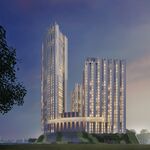micheal_can
Senior Member
The majority of people are going to be torn between 2a, and 2b. I do find it interesting though, that they chose to include a brimely/sheppard station over a station on birchmount.
Either of them can make sense. 2A has the advantage of putting to rest the arguments of changing the existing Sheppard line to an LRT or any other crazy ideas. 2B has the advantage of swooping down to catch key areas.
No LRT will expand over the city border. Bu, if either of #2 gets built, we may see it further extended to the PTC and Beyond.......Just go with 2B. Of course this happened smh. Going out to morningside will force the Eglinton East LRT to Pickering Town Centre.




